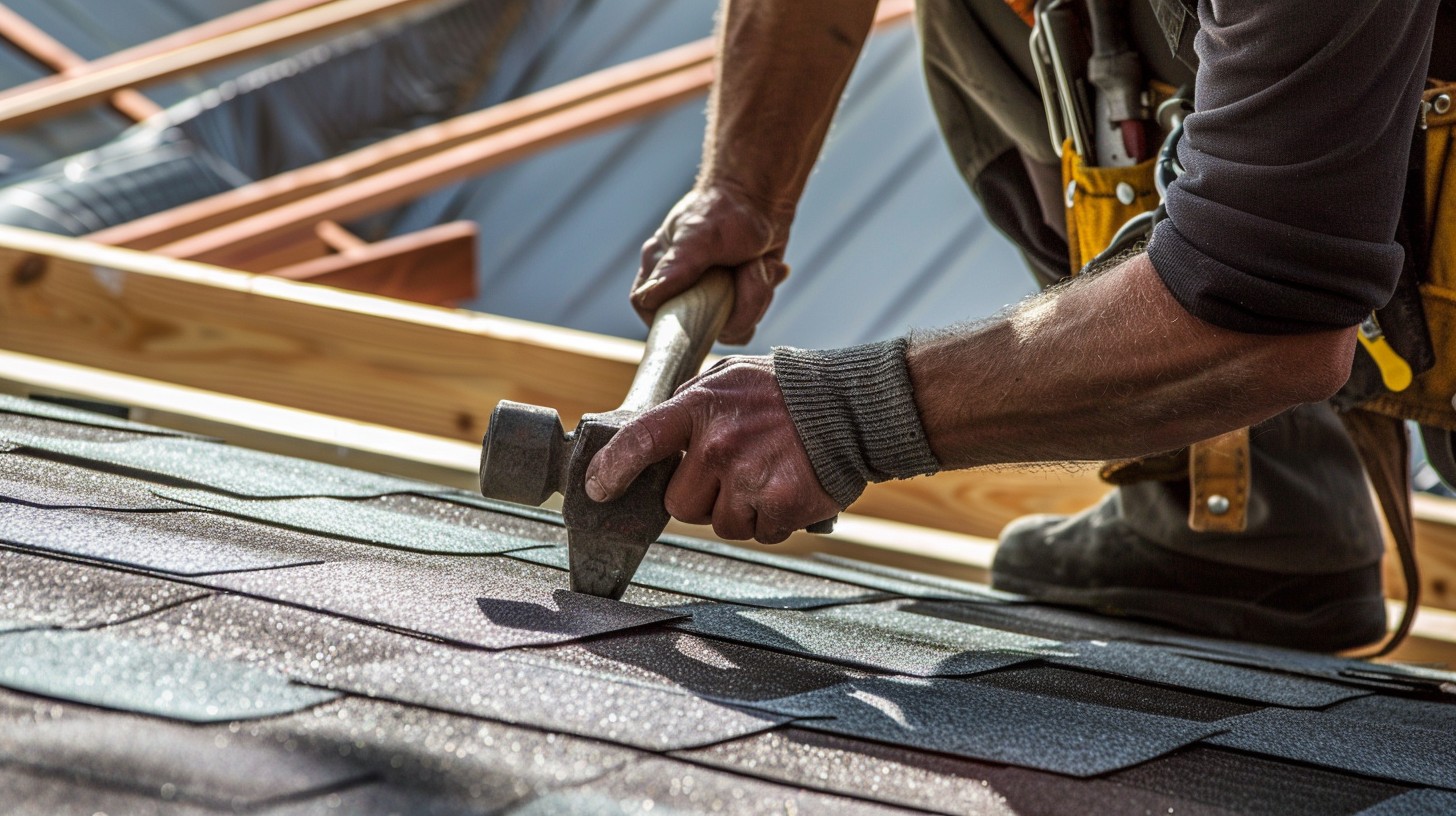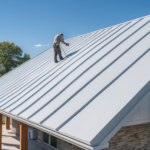Can a Metal Roof Withstand Hail?
September 17, 2024 | By Mike Gonet | Filed under: Blog

Modern metal roofs are designed to endure hailstorms effectively. Constructed from steel and aluminum, they possess outstanding strength and impact resistance. Their interlocking panels create a seamless barrier that can withstand various hailstone sizes. Metal roofing’s smooth surface prevents water and ice buildup, reducing the risk of leaks and damage. With proper installation and maintenance, metal roofs maintain their integrity against hail impact. To understand further how metal roofs excel in hail resistance, consider factors like metal thickness, coating type, and roof design. Metal roofs offer homeowners a durable and long-lasting solution
in hail-prone areas.
Hail Damage and Metal Roofs
Metal roofs have been proven to exhibit superior durability and resistance against hail damage compared to traditional roofing materials. Their resilience stems from their robust construction, typically made from steel, aluminum, copper, or zinc. These materials offer exceptional strength and impact resistance, making them ideal for regions prone to hailstorms.
Metal roofs are designed to withstand hailstones of various sizes, ranging from small pellets to larger, more destructive chunks. The interlocking panels or shingles of metal roofs create a seamless barrier that minimizes the risk of hail penetration. Moreover, the smooth surface of metal roofing prevents water and ice accumulation, reducing the likelihood of hail-related leaks or structural damage.
Furthermore, metal roofs have a high strength-to-weight ratio, allowing them to endure the force of hail impact without sustaining significant harm. When properly installed and maintained, metal roofs can provide long-term protection against hail damage, offering homeowners peace of mind during severe weather conditions.
Factors Affecting Hail Resistance
Various factors play an important role in determining the level of hail resistance exhibited by roofing materials. The thickness and hardness of the metal used in the roof are vital factors. Thicker metals, such as steel or aluminium, offer better resistance to hail impact than thinner materials. Moreover, the metal coating applied to the roof can influence its ability to withstand hail. For instance, roofs with protective coatings like zinc, aluminum, or a combination of both, demonstrate higher durability against hail damage.
The design and structure of the roof also influence its hail resistance. Metal roofs with a standing seam design, where the metal panels are interlocked along raised seams, tend to perform better against hail than roofs with exposed fasteners. The roof’s slope can also affect hail resistance, with steeper slopes often experiencing less hail damage due to the angle at which hailstones hit the surface. Proper roof installation and maintenance are equally important factors that can enhance its ability to withstand hailstorms.
Testing Metal Roofs for Hail
Hail resistance testing for metal roofs involves subjecting the roofing materials to controlled impact simulations to evaluate their durability under hailstorm conditions. These tests aim to replicate the impact of hailstones of varying sizes and velocities. This allows manufacturers and researchers to assess how well metal roofs can withstand extreme weather.
The steel ball test is a standard method used in testing metal roofs for hail resistance. In this test, steel balls of different sizes are dropped onto the metal panels from varying heights to simulate the impact of hailstones. The results are then analyzed to determine the extent of damage and the overall resilience of the roofing material.
Additionally, laboratory testing may involve pneumatic cannons to shoot ice balls at high speeds towards the metal roof samples. This helps researchers understand how different metal alloys and coatings perform under intense hail conditions, providing valuable data for improving the hail resistance of metal roofs.
Benefits of Metal Roof in Hail
Testing metal roofs for hail resistance reveals the advantages of these roofing materials in mitigating damage from severe weather conditions. Metal roofs offer significant benefits when it comes to hail protection. The primary benefit is their durability and strength. Metal roofs are typically made from materials such as steel, aluminum, or copper, which are inherently robust and can withstand impact from hailstones of various sizes. Unlike traditional roofing materials like asphalt shingles, which can easily crack or break upon hail impact, metal roofs remain intact and provide better protection for the structure underneath.
Moreover, metal roofs have smooth surfaces that allow hail to bounce off more efficiently, reducing the likelihood of damage. This characteristic also prevents water infiltration, which can occur when hail damages the roof’s protective layers. In addition, metal roofs have a longer lifespan than other roofing materials, which means they can continue to provide hail protection for many years without frequent repairs or replacements. Overall, the benefits of metal roofs in hail-prone areas make them a valuable investment for homeowners looking to protect their properties from severe weather conditions.





